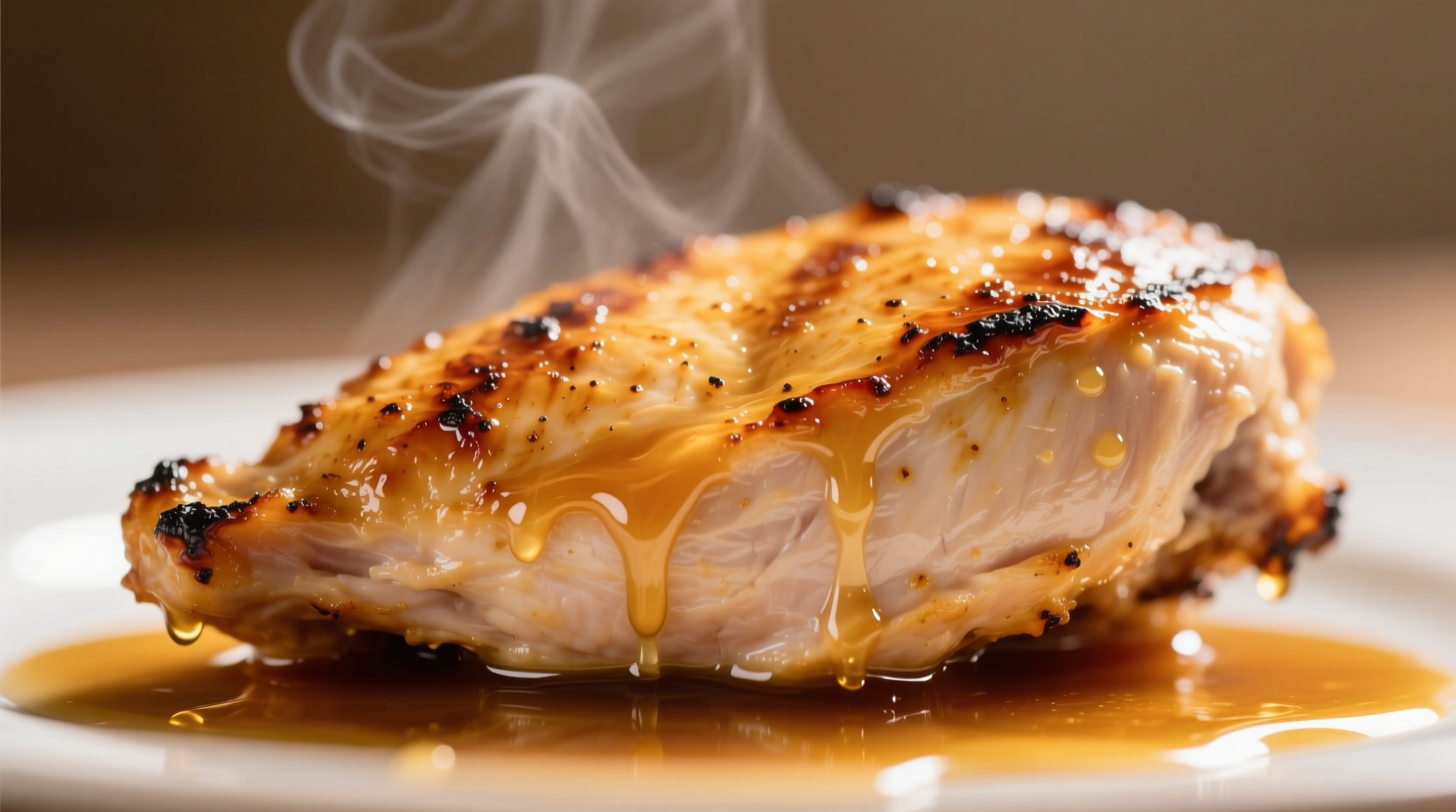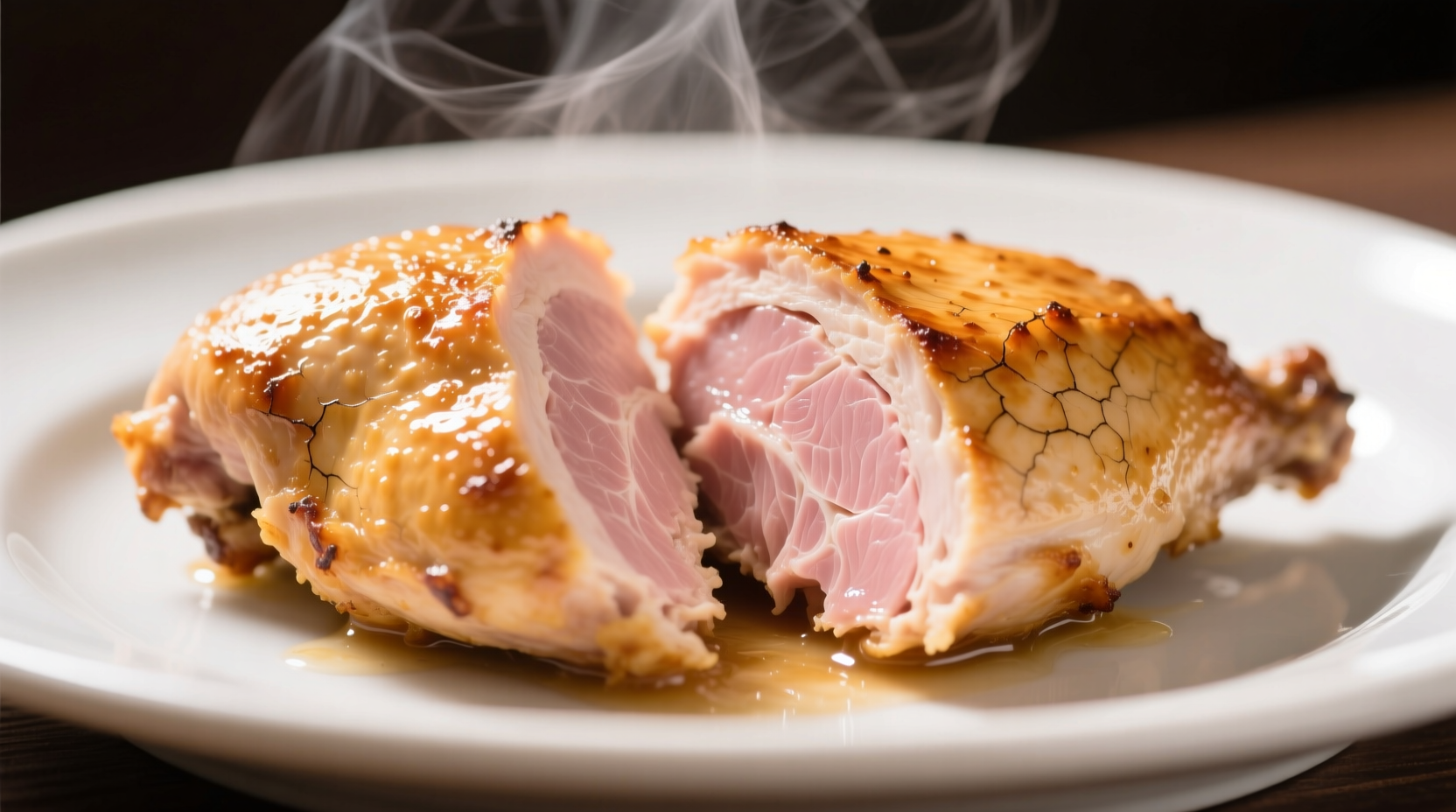Knowing exactly what properly cooked chicken looks like prevents foodborne illness while ensuring tender, flavorful results. With salmonella risk from undercooked poultry, visual identification serves as your first line of defense before thermometer verification. This guide breaks down precise visual indicators across different cuts so you can confidently serve safe, delicious chicken every time.
Visual Indicators of Perfectly Cooked Chicken
When examining cooked chicken, focus on three critical visual elements: color transformation, texture changes, and juice clarity. Raw chicken's pinkish hue transforms through distinct stages as proteins denature during cooking. The most reliable visual cue? Complete opacity without any translucent areas, particularly near bones where heat penetration lags.
As chicken reaches 160°F, myosin proteins coagulate causing the characteristic white color. By 165°F (USDA's recommended safe temperature), collagen breakdown creates that desirable firm-yet-juicy texture. Remember that carryover cooking will raise internal temperature 5-10°F after removal from heat source.
| Cut Type | Proper Color | Texture | Juice Clarity |
|---|---|---|---|
| Boneless breast | Uniform white | Firm, springs back | Clear |
| Bone-in thigh | White with possible pink near bone | Meat pulls easily from bone | Clear or faint yellow |
| Wings | Golden brown exterior, white interior | Crispy skin, tender meat | Clear when pierced at joint |
This visual reference aligns with USDA Food Safety and Inspection Service guidelines confirming that color alone isn't foolproof, but combined with temperature checks provides reliable safety verification. Dark meat's myoglobin content can retain pinkish tones even at safe temperatures, causing unnecessary food waste when misinterpreted.
Checking Different Cuts: Practical Techniques
Each chicken cut requires specific visual assessment approaches. For boneless breasts, slice horizontally at thickest point to verify uniform opacity. With bone-in pieces, check both near the bone and at meat's surface. Whole roasted chickens need examination at multiple points: breast, thigh, and wing joints.
When grilling, look for golden-brown sear marks with no raw pink showing through. Pan-seared chicken should release easily from the cooking surface when properly seared. For fried chicken, golden crust with no pale spots indicates thorough cooking beneath.
Common Misconceptions and Mistakes
Many home cooks mistakenly discard safely cooked chicken due to persistent pinkness near bones. According to the USDA's Chicken from Farm to Table guide, this pink hue in dark meat results from hemoglobin reacting with air during cooking and doesn't indicate undercooking when internal temperature reaches 165°F.
Conversely, white meat appearing grayish with cloudy juices signals dangerous undercooking. Overcooked chicken shows as uniformly dry, stringy, and chalky white with minimal juices. The sweet spot? Slightly springy texture that yields to gentle pressure while retaining moisture.
Temperature Verification: The Final Safety Check
Visual inspection should always be confirmed with an instant-read thermometer. Insert into thickest part avoiding bones for accurate reading. The FDA Food Code specifies 165°F as the minimum safe temperature for poultry, killing harmful bacteria like salmonella and campylobacter.
For meal preppers and batch cooks, remember that resting time allows juices to redistribute while carryover cooking completes the process. Tent foil-covered chicken for 5-10 minutes before slicing to maintain optimal moisture levels.
Recognizing Undercooked vs Overcooked Chicken
Undercooked chicken displays dangerous characteristics: translucent pink flesh, rubbery texture, and pink or cloudy juices. This condition requires immediate return to heat until safe temperature is reached.
Overcooked chicken shows as uniformly dry, stringy, and chalky white throughout with minimal juices. While not unsafe, it indicates significant moisture loss from exceeding 175°F internal temperature. The ideal window? 165-170°F where meat remains juicy yet safe.
Professional chefs use the "wiggle test" for whole birds - legs should move freely in sockets when properly cooked. For precise results though, always verify with thermometer as visual cues alone can be misleading with certain cooking methods or chicken varieties.

Key Takeaways for Safe Chicken Preparation
Mastering visual identification of cooked chicken combines color assessment, texture evaluation, and juice observation with thermometer verification. Remember that dark meat's natural pigments may show pink near bones even when safely cooked to 165°F. Always prioritize temperature readings over color alone, and when in doubt, cook a few extra minutes rather than risk foodborne illness.











 浙公网安备
33010002000092号
浙公网安备
33010002000092号 浙B2-20120091-4
浙B2-20120091-4